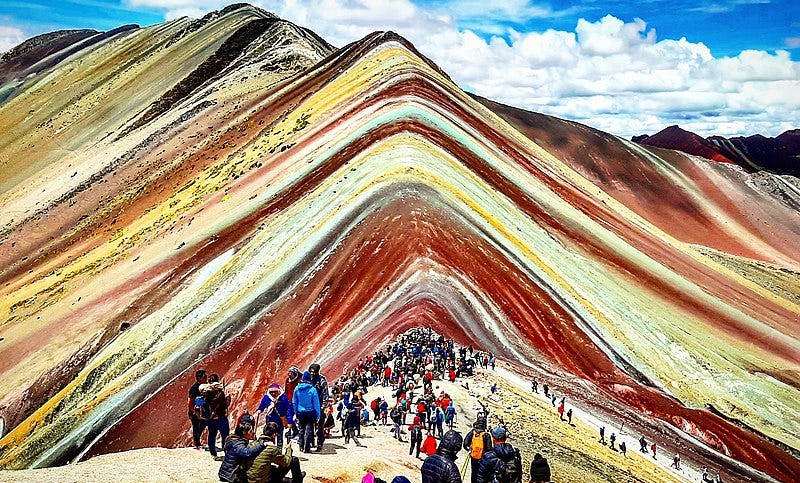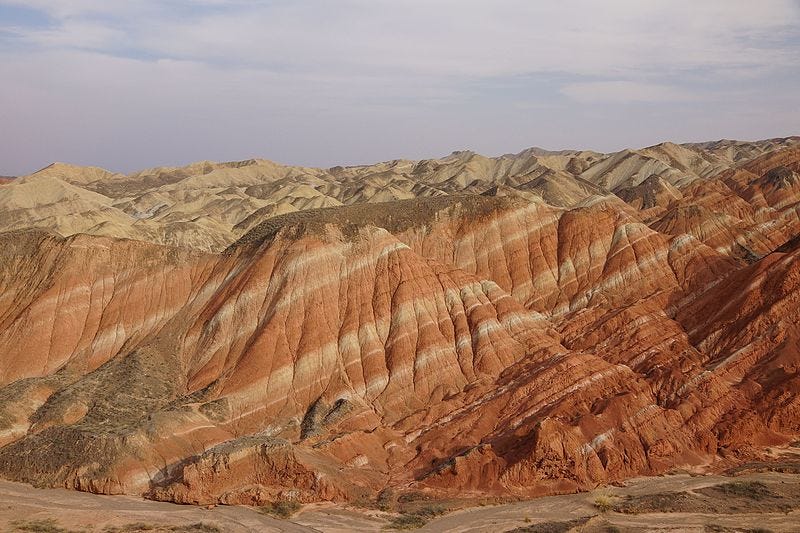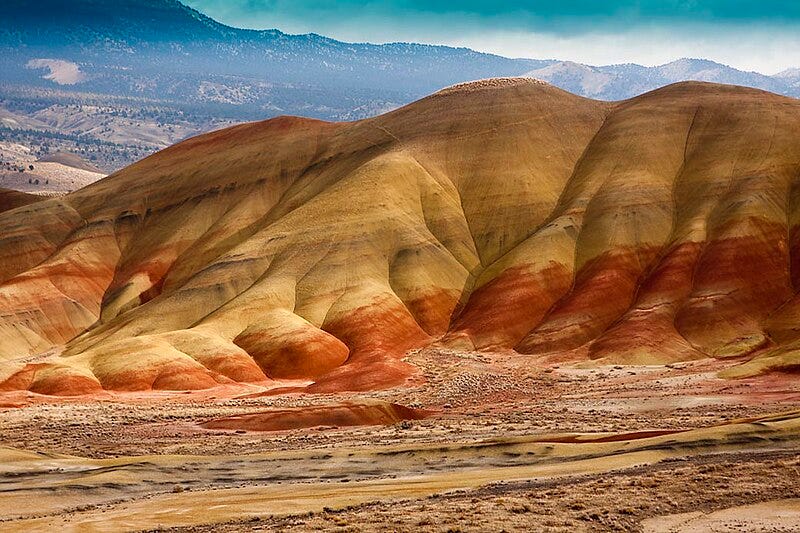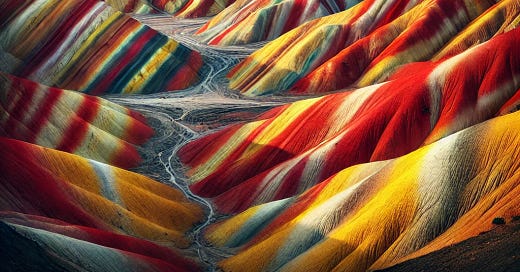The Quran, the divine book revealed by Allah, stands as a timeless miracle and a testament to His words. It is a guide for humanity, filled with wisdom, knowledge, and signs that continue to unfold as science advances. The Quran is not only a spiritual beacon but also a source of knowledge that foretold many scientific discoveries centuries before they were known to humankind.
One of the remarkable aspects of the Quran is its reference to natural phenomena, many of which are being confirmed by modern science. The Quran speaks of the mountains as stabilizers for the Earth and describes them with vivid imagery that aligns with discoveries about the Earth's geological wonders. Among these is the mention of colored mountains, a phenomenon that was not known or observed in the region where the Quran was revealed. This profound reference underscores the divine knowledge embedded in the Quran and the evidence it provides of Allah's wisdom.
"And of the mountains are tracts, white and red, of varying shades and (some) extremely black." - Surah Fatir:27
The Prophet Muhammad (peace and blessings be upon him) received the Quran in the arid and monochromatic landscapes of Arabia, where such vibrant geological features were absent. Despite this, the Quran explicitly speaks of mountains with various hues, as stated in Surah Fatir (35:27): “And among the mountains are streaks white and red, of varying shades and [some] extremely black.” This description aligns perfectly with the colorful mountain ranges discovered around the world, centuries after the Quran was revealed. These references provide not only spiritual guidance but also invite reflection on the intricate and awe-inspiring creation of Allah.
Let us now explore four examples of such colorful mountains, marvels that echo the description in the Quran and stand as signs for those who reflect.
1. Rainbow Mountain (Vinicunca) – Peru
Nestled in the Andes Mountains near Cusco, Peru, Rainbow Mountain is a breathtaking display of Allah’s artistry. Rising to over 5,000 meters above sea level, this mountain is adorned with vibrant bands of red, yellow, green, blue, and white.

The colors are the result of unique mineral compositions in the soil:
Red: Derived from iron oxide.
Yellow: Caused by iron sulfide.
Green: Formed by chlorite minerals.
Blue and Turquoise: Linked to copper sulfate compounds.
White: Representing quartz and sandstones.
Rainbow Mountain stands as a reminder of Allah’s creative power, showcasing the beauty of natural processes shaped over millions of years.
2. Zhangye Danxia Landform – China
The Zhangye Danxia Landform, located in Gansu Province, China, is a vivid landscape that looks like a painting come to life. Formed by layers of red sandstone and mineral deposits, this region features a dazzling array of red, yellow, green, and gray hues. The Quran’s description of streaked mountains mirrors this geological masterpiece, where tectonic activity and erosion have sculpted the land into multicolored hills. These colors, created by oxidized iron and other minerals, become even more striking during sunrise and sunset, highlighting the grandeur of Allah’s creation.

3. Painted Hills – United States
Located in Oregon within the John Day Fossil Beds National Monument, the Painted Hills are named for their colorful stratifications. These hills display shades of red, orange, yellow, black, and gold, each representing different periods of volcanic ash and sediment accumulation.

The colors tell a story of ancient climates and ecosystems:
Red and Orange: Laterite soils formed in warm, wet conditions.
Black: Carbon-rich layers from ancient vegetation.
Yellow and Gold: Weathered volcanic ash.
The Painted Hills, like the others, serve as a reflection of Allah’s wisdom in shaping the Earth with such precision and beauty.
Conclusion
The Quran’s references to colored mountains reveal profound truths that science has only recently uncovered. From Rainbow Mountain in Peru to the Zhangye Danxia in China, and from the Painted Hills in the United States to Landmannalaugar in Iceland, these geological wonders stand as signs of Allah’s unparalleled artistry. They remind us to reflect on His creation and to marvel at the knowledge embedded in the Quran, which continues to guide and inspire humanity. For those who ponder, these mountains are not only natural spectacles but also affirmations of the divine wisdom that shapes our world.







Ma Shaa Allah, thank you for writing this. As someone who is still learning the Qur’an, this article provides valuable additional knowledge. 💗